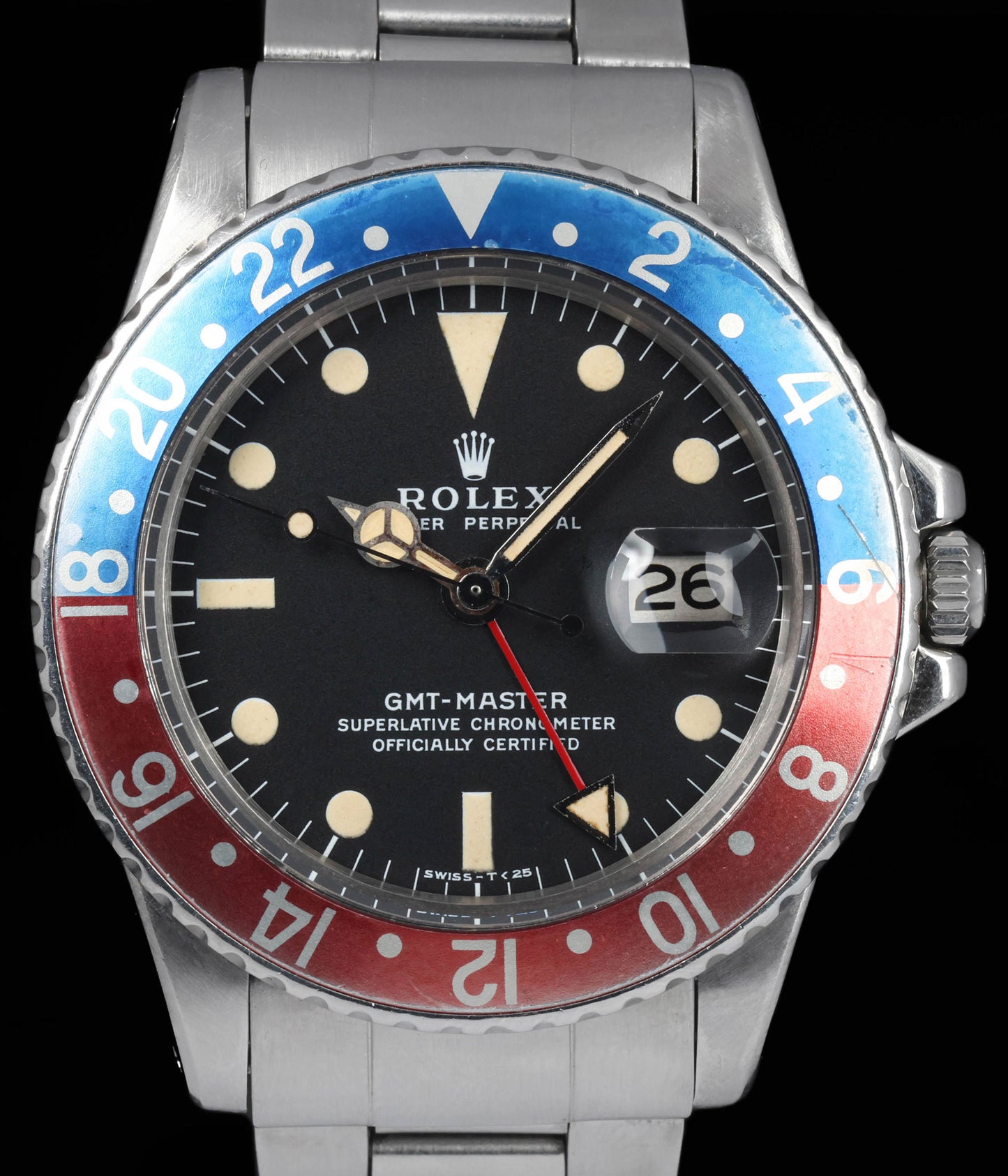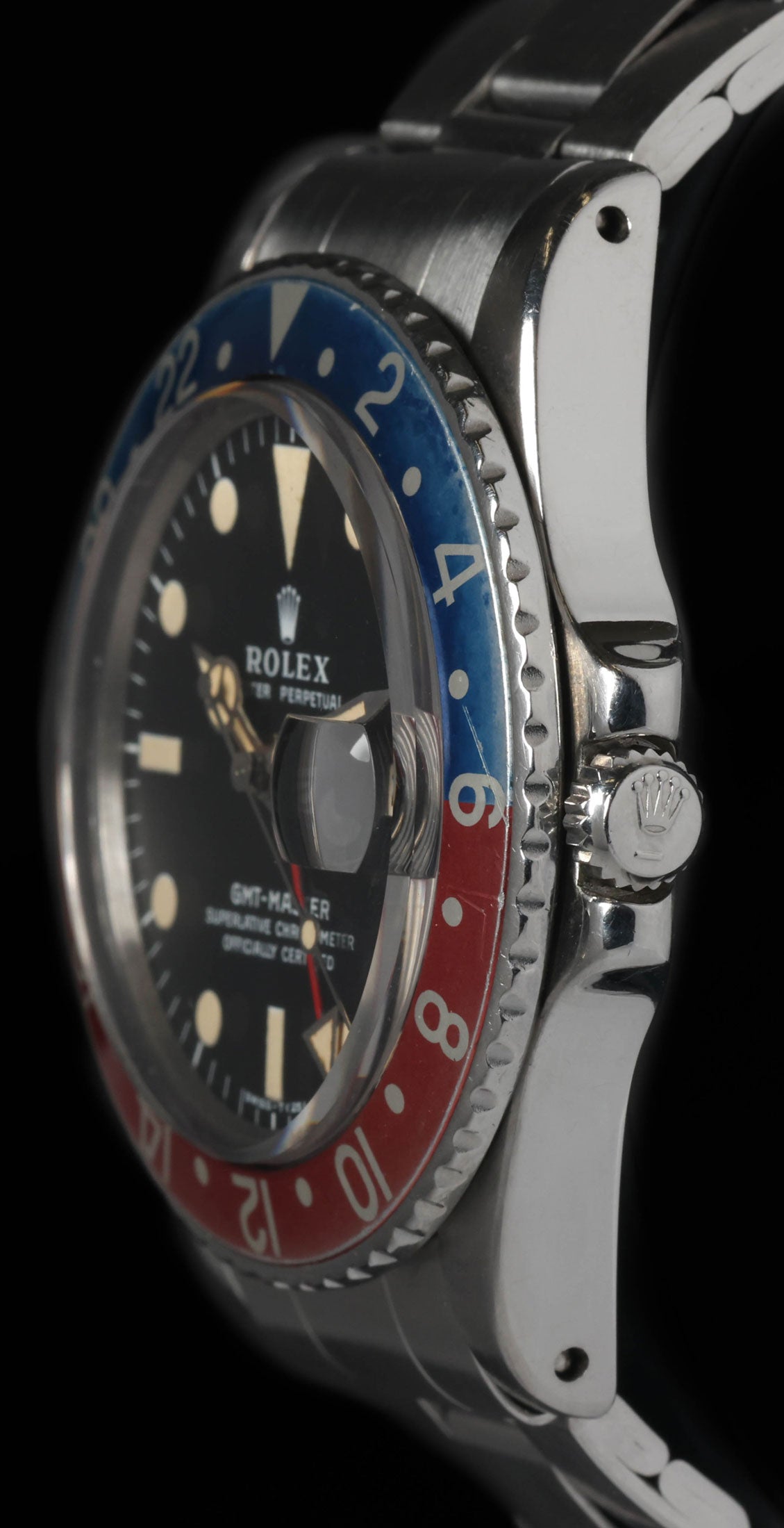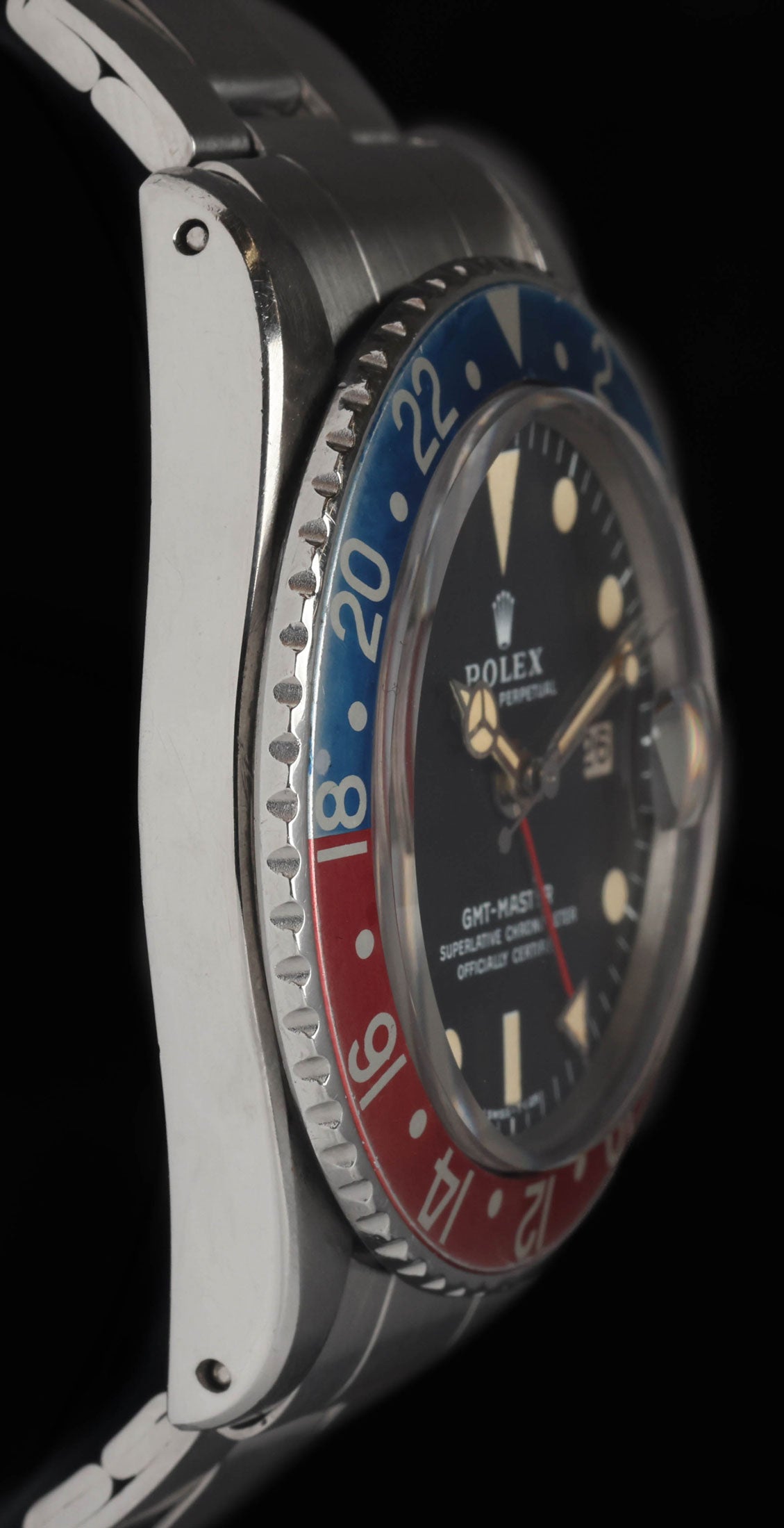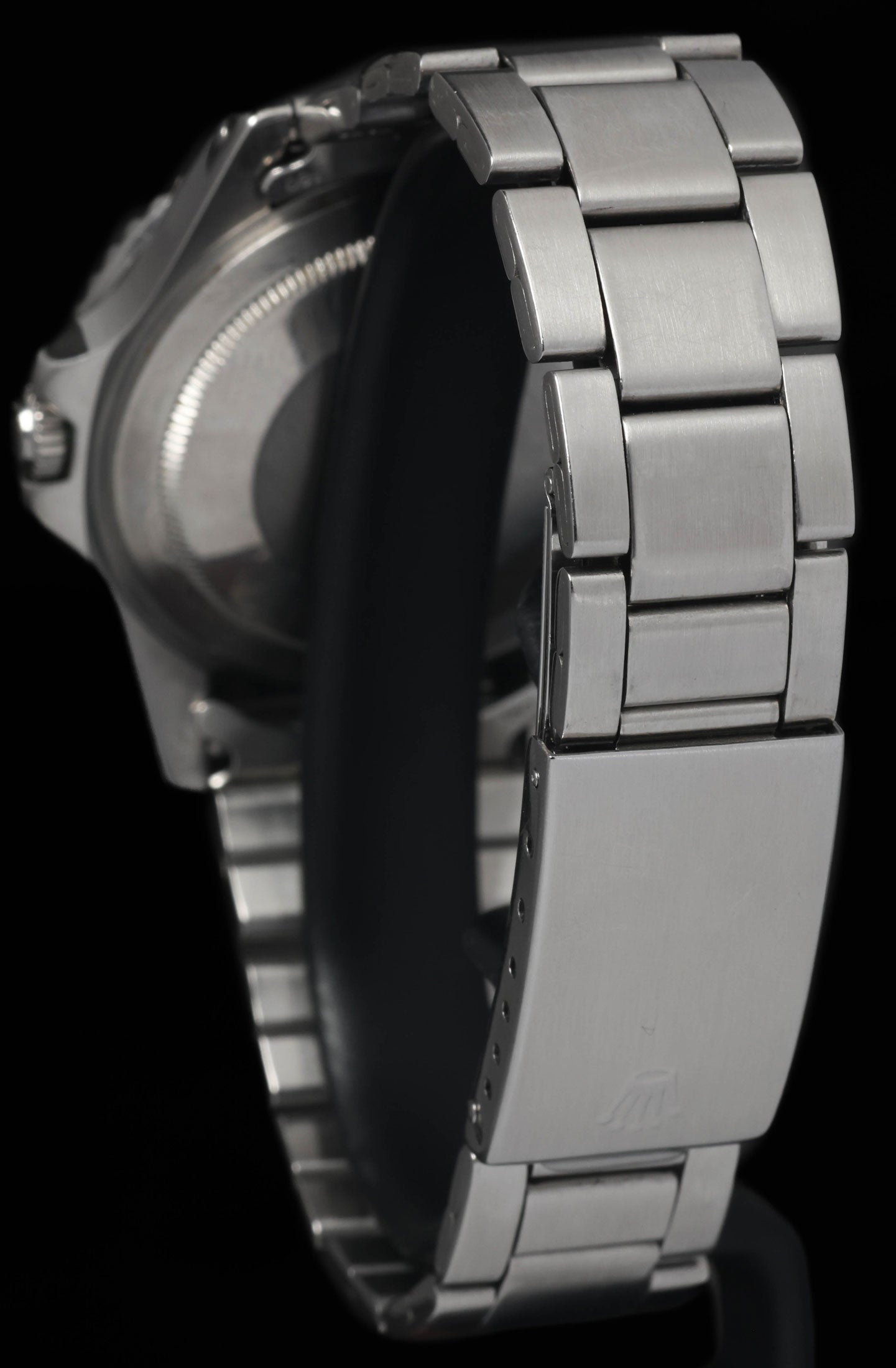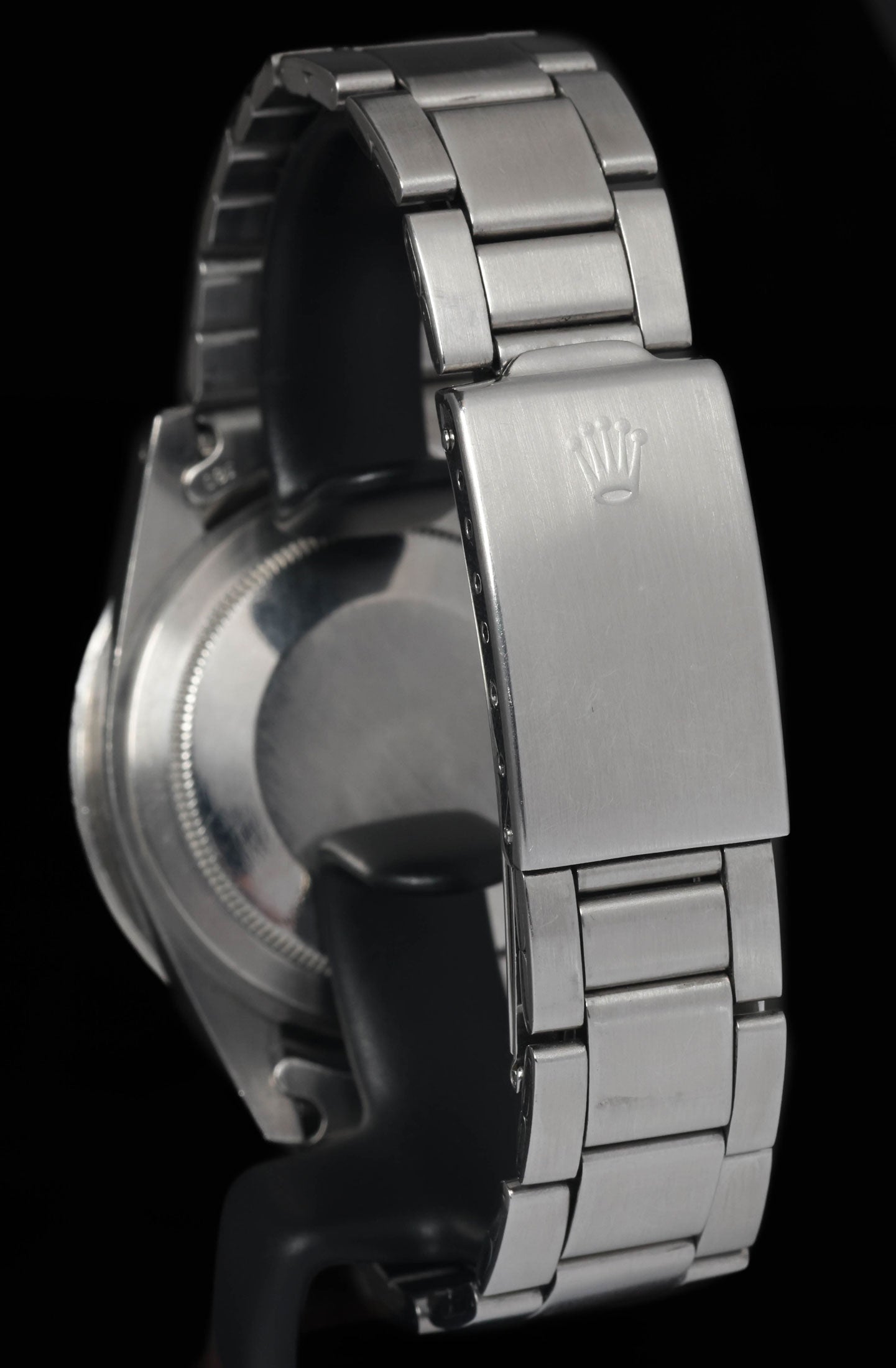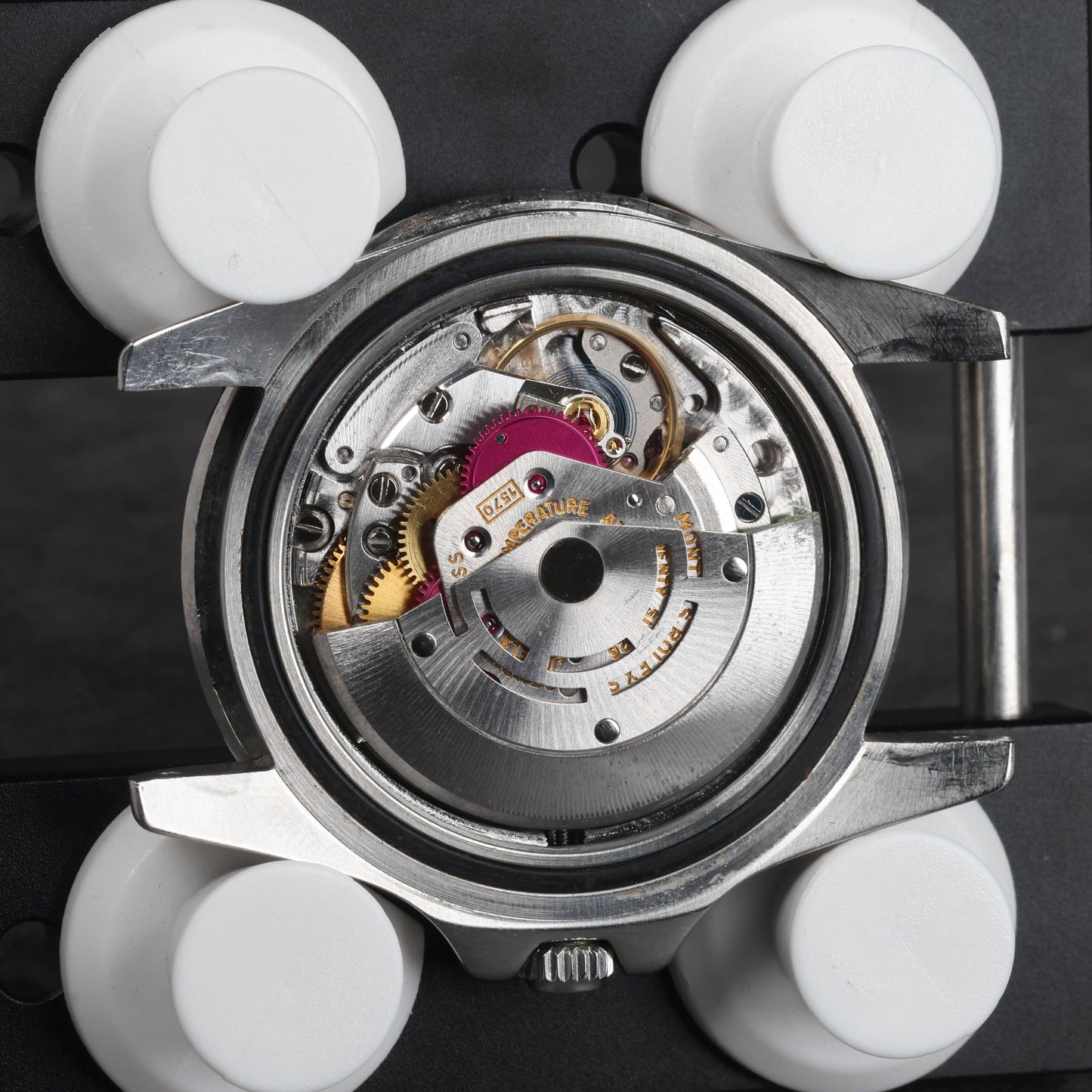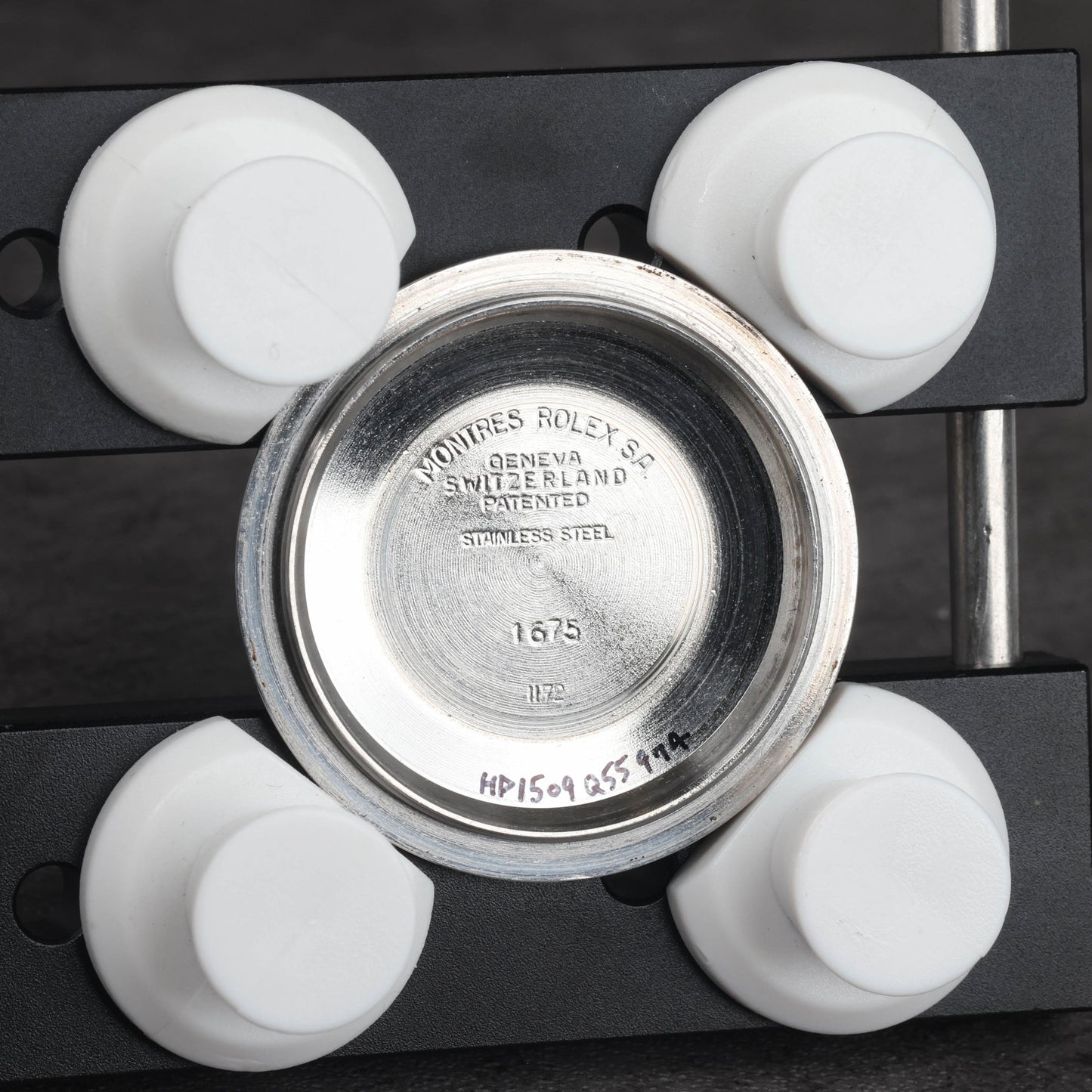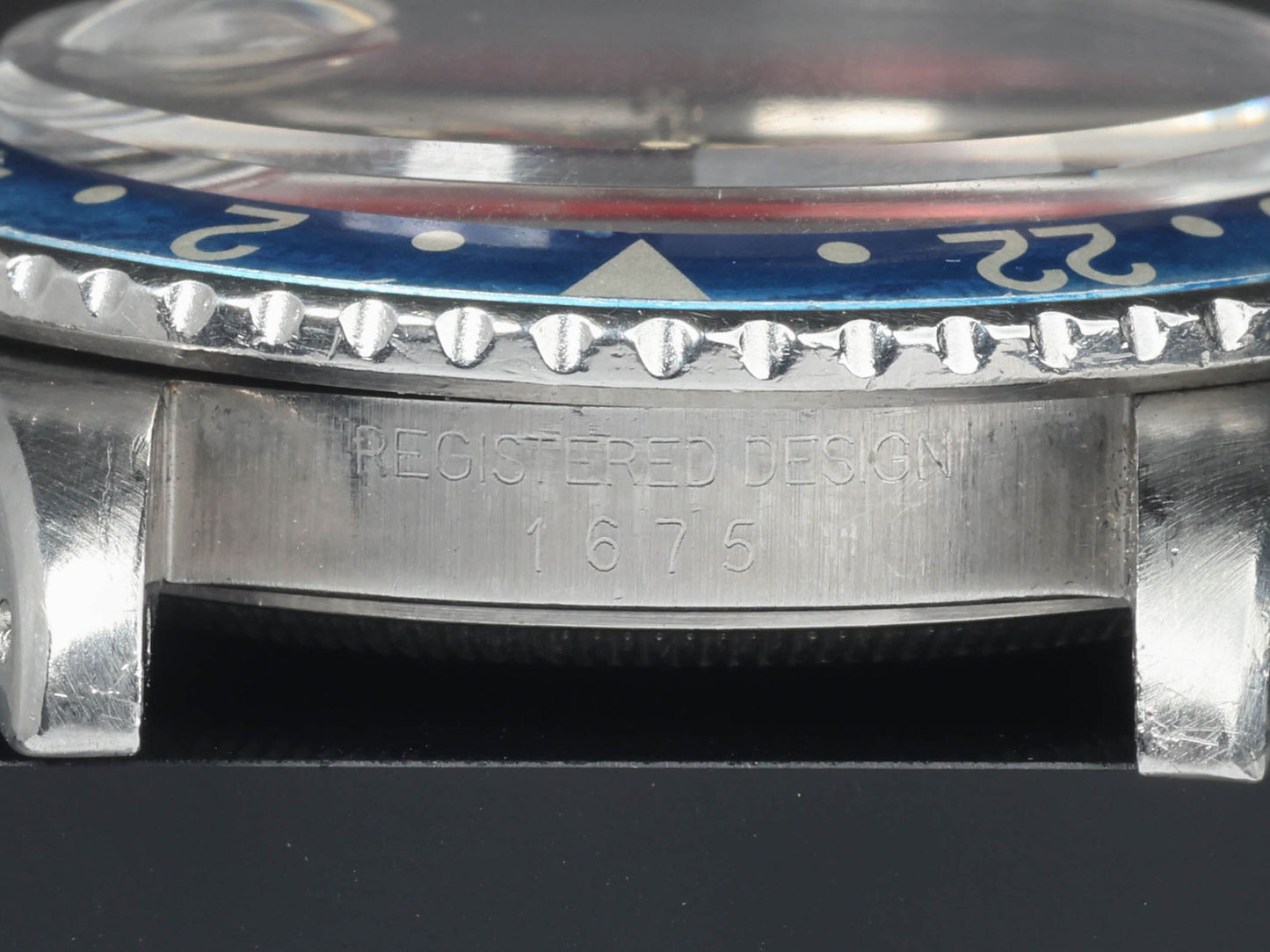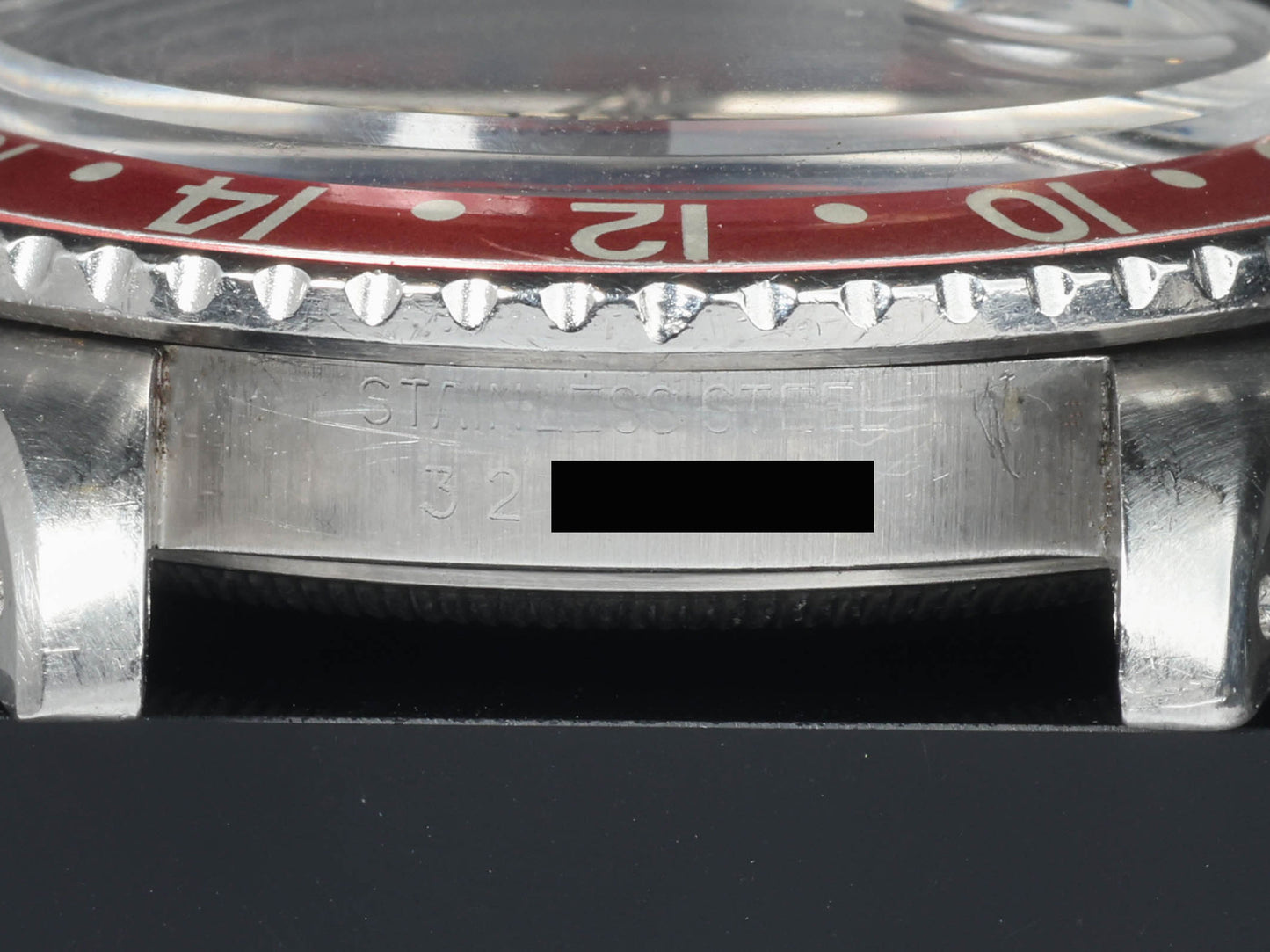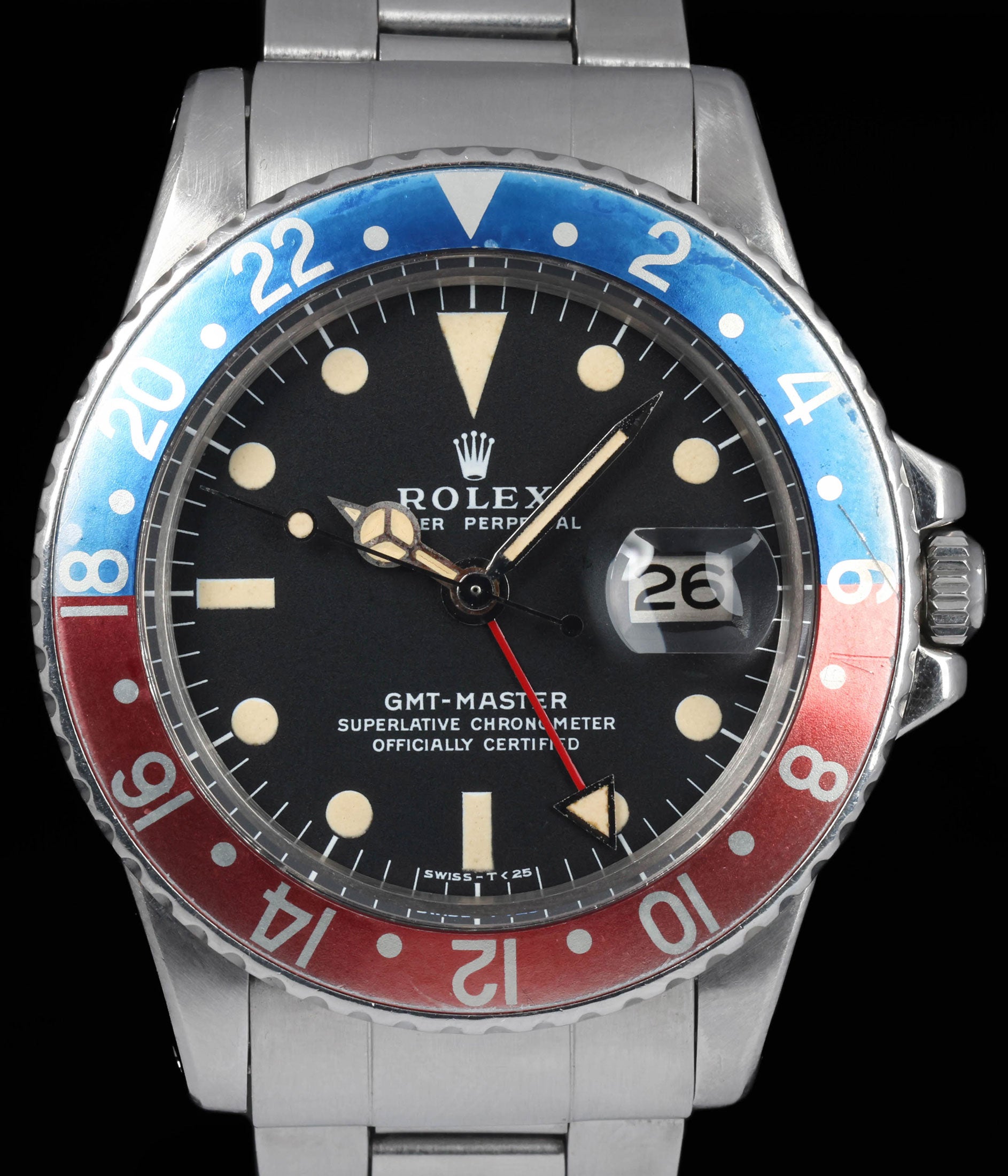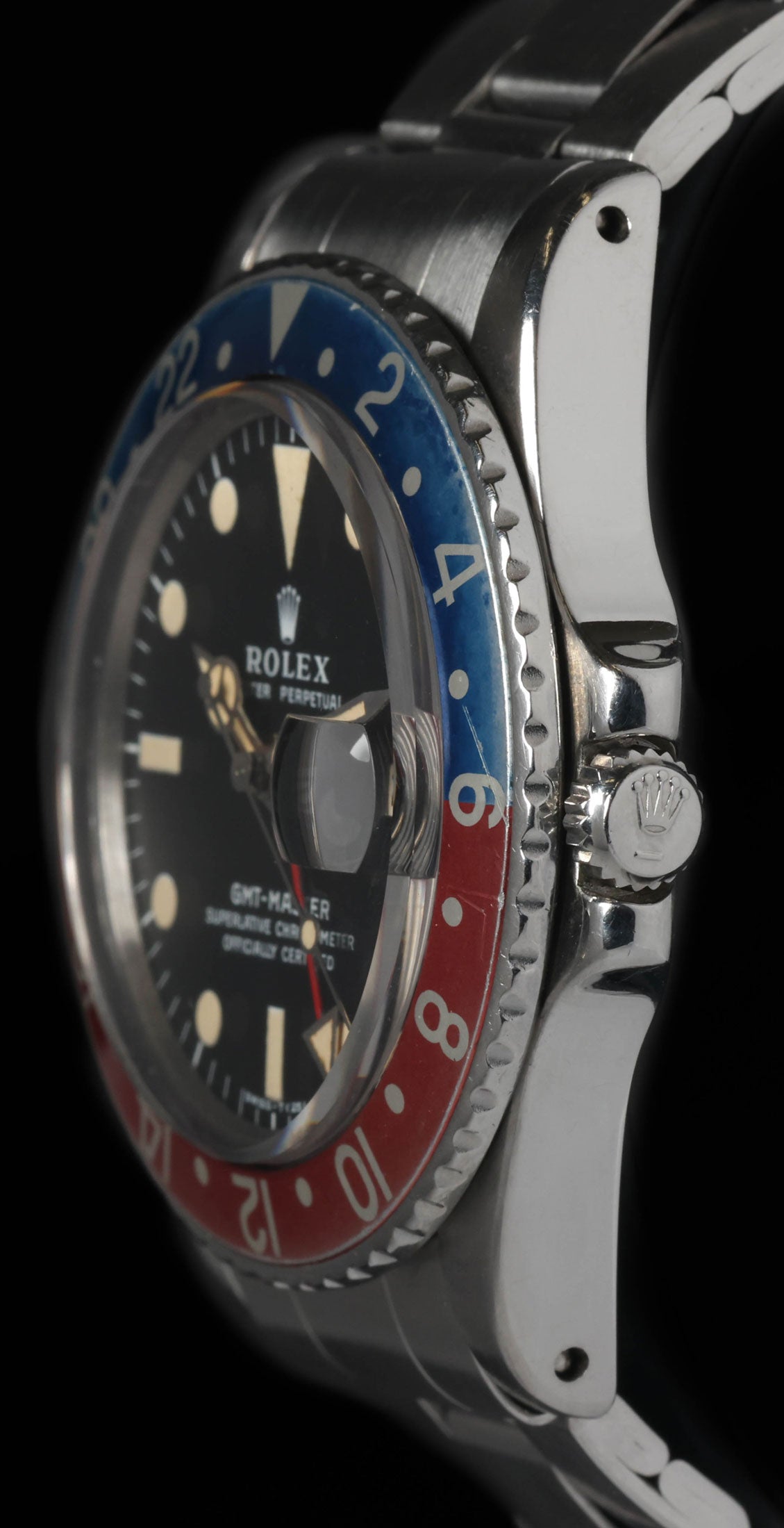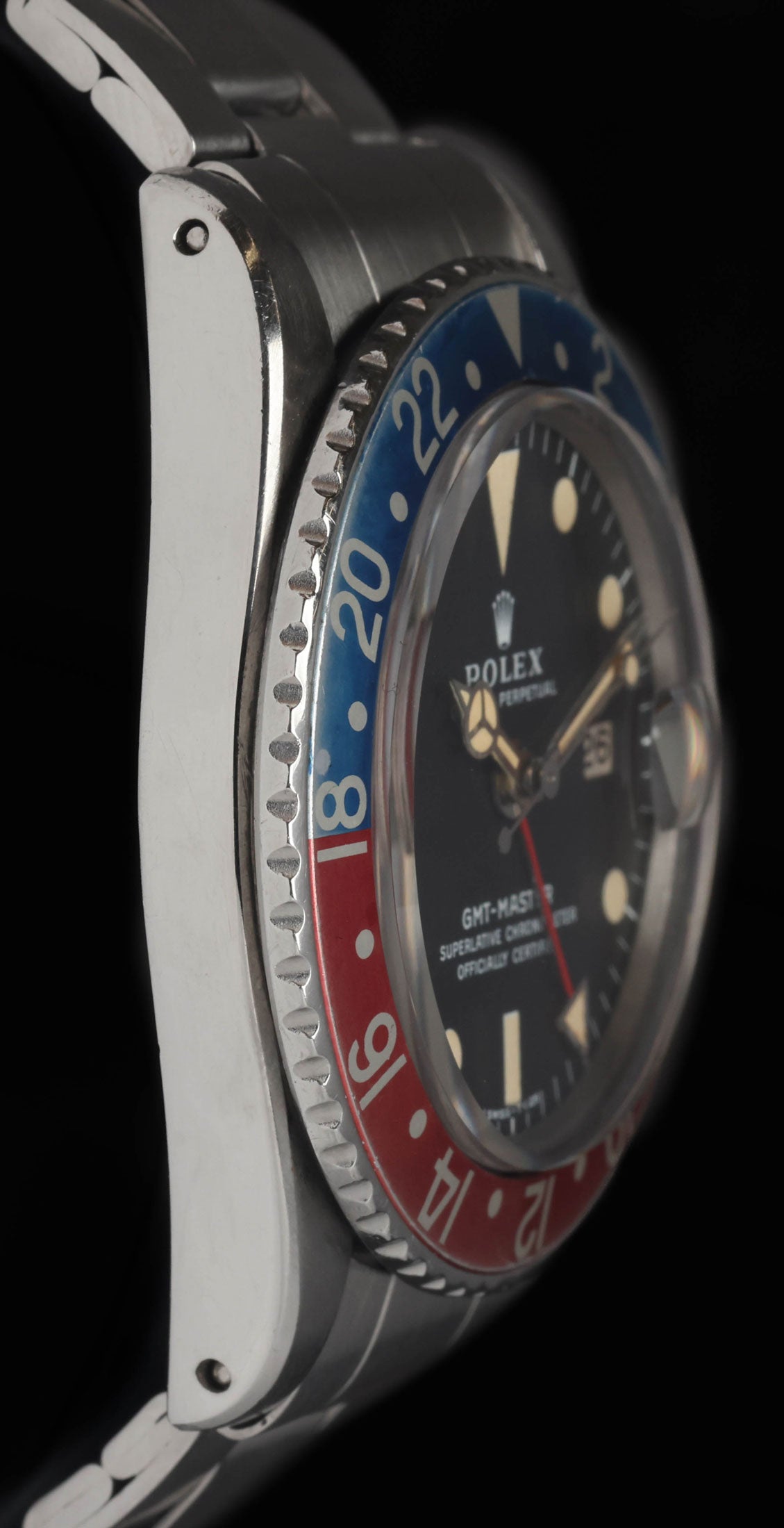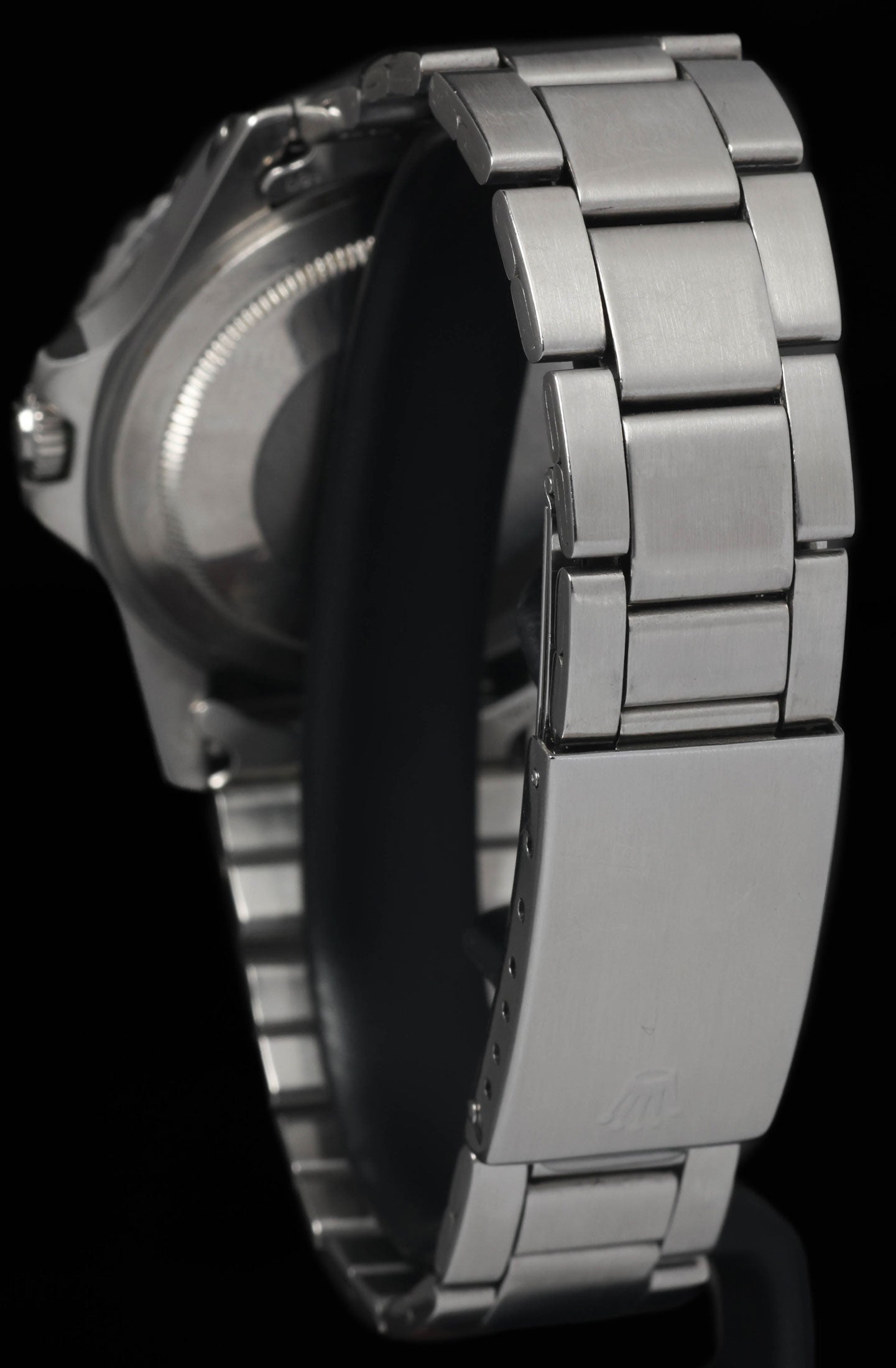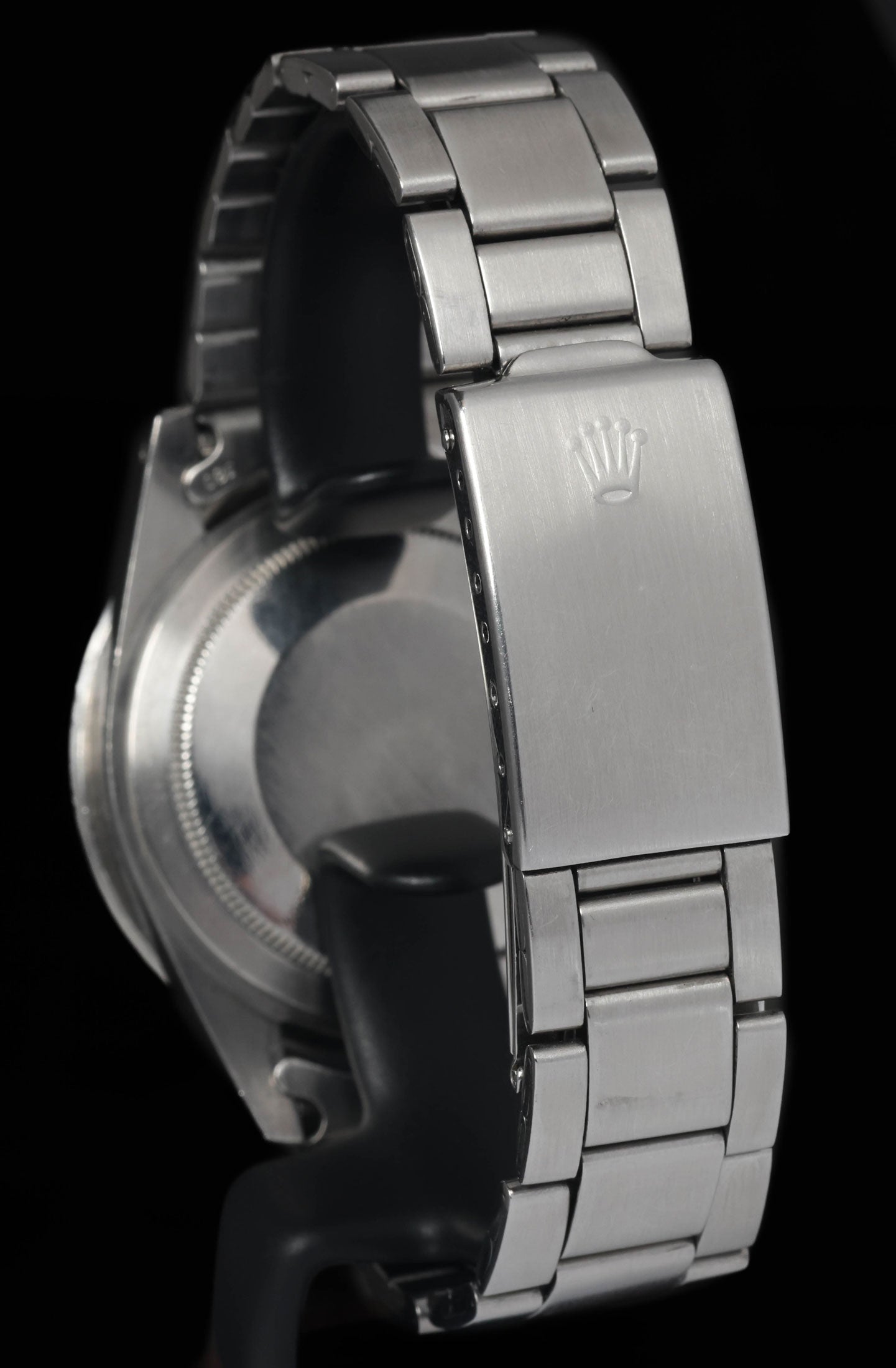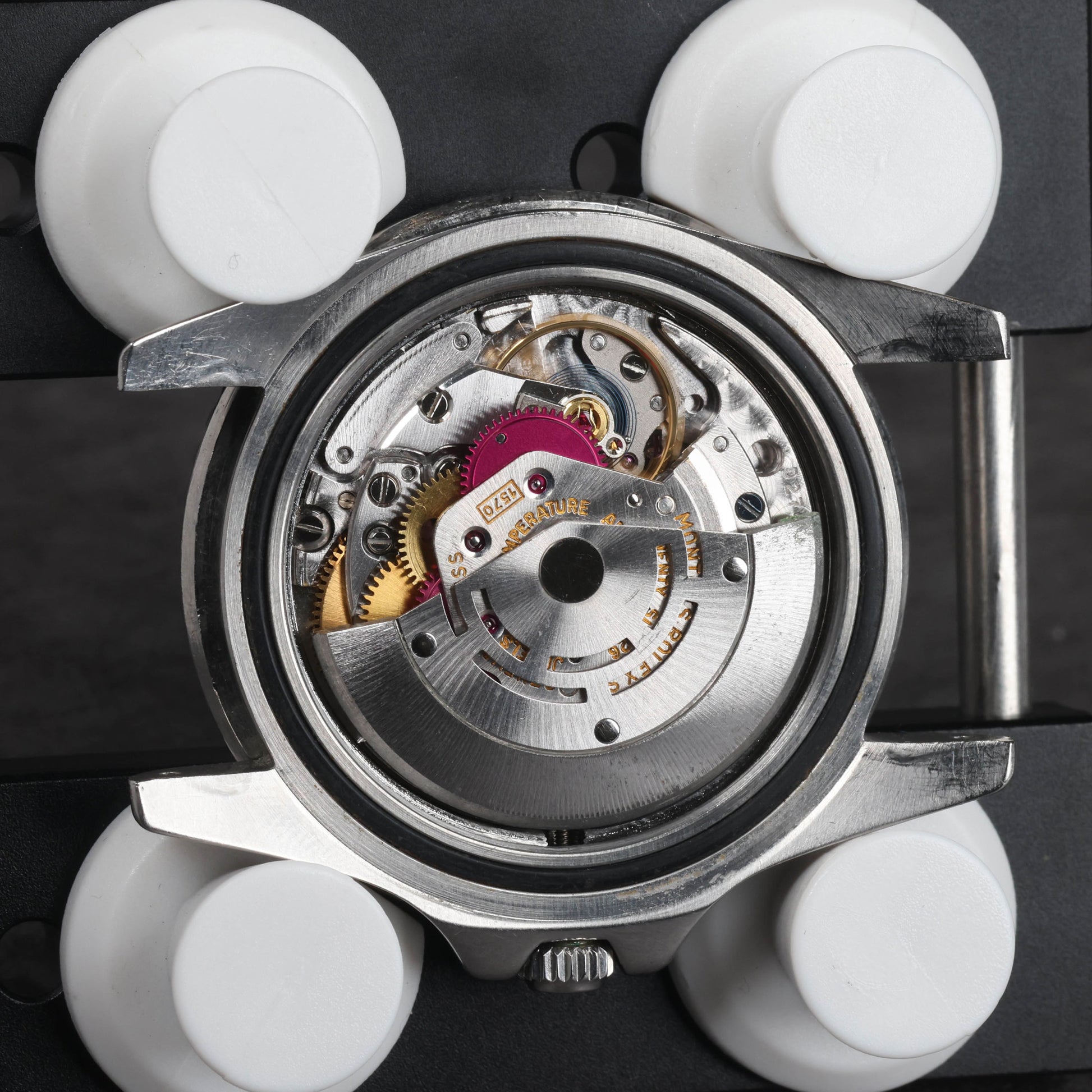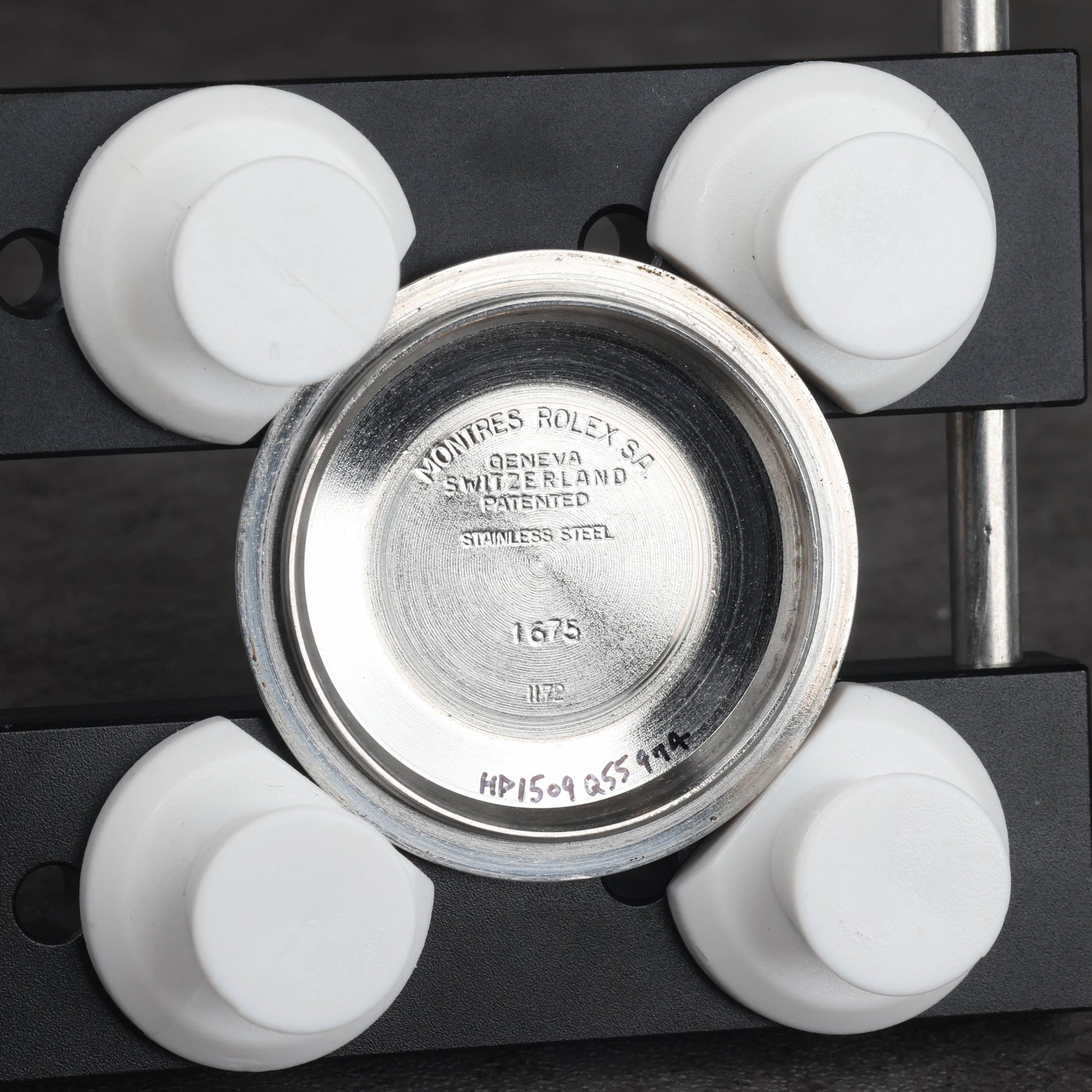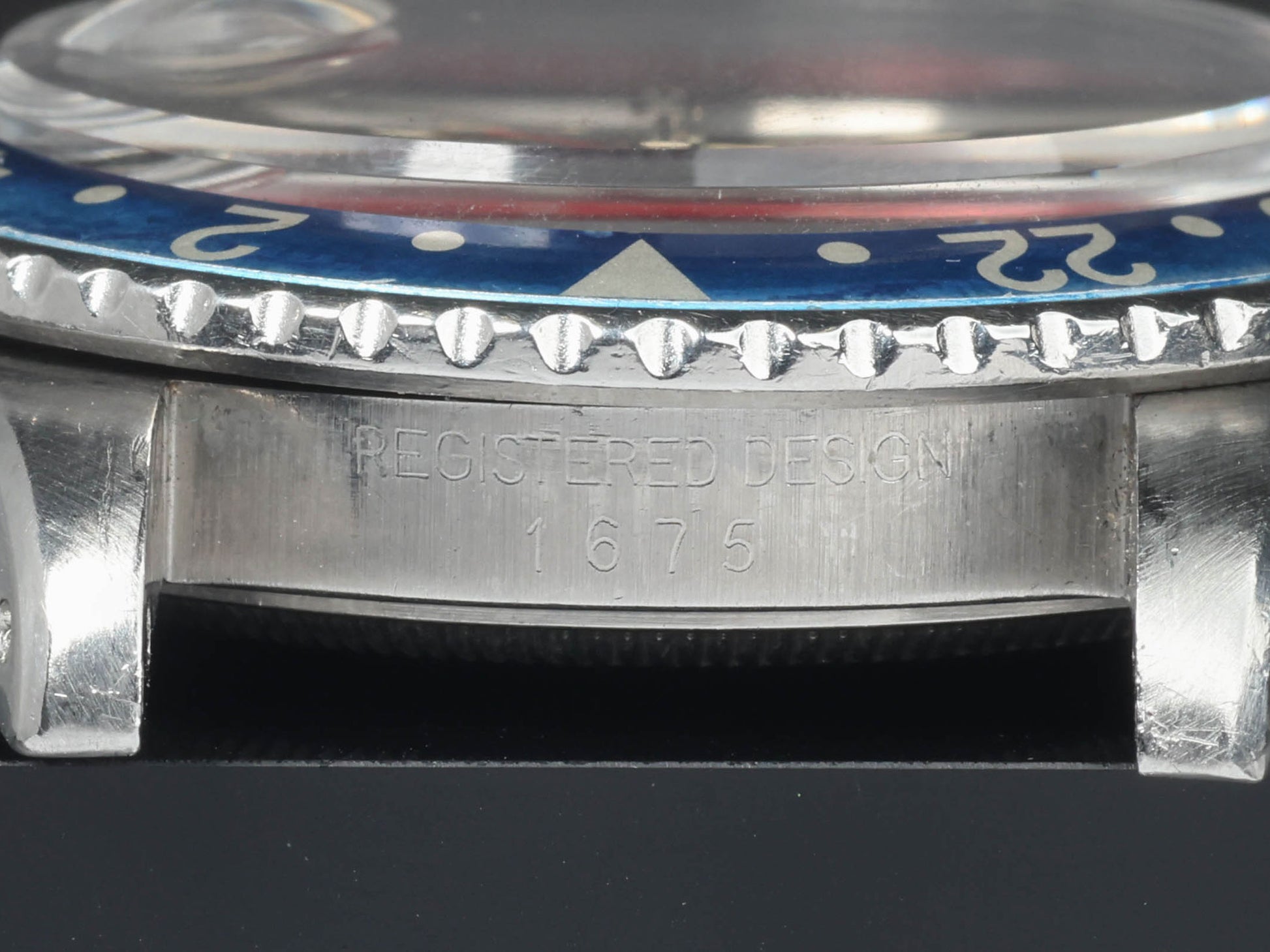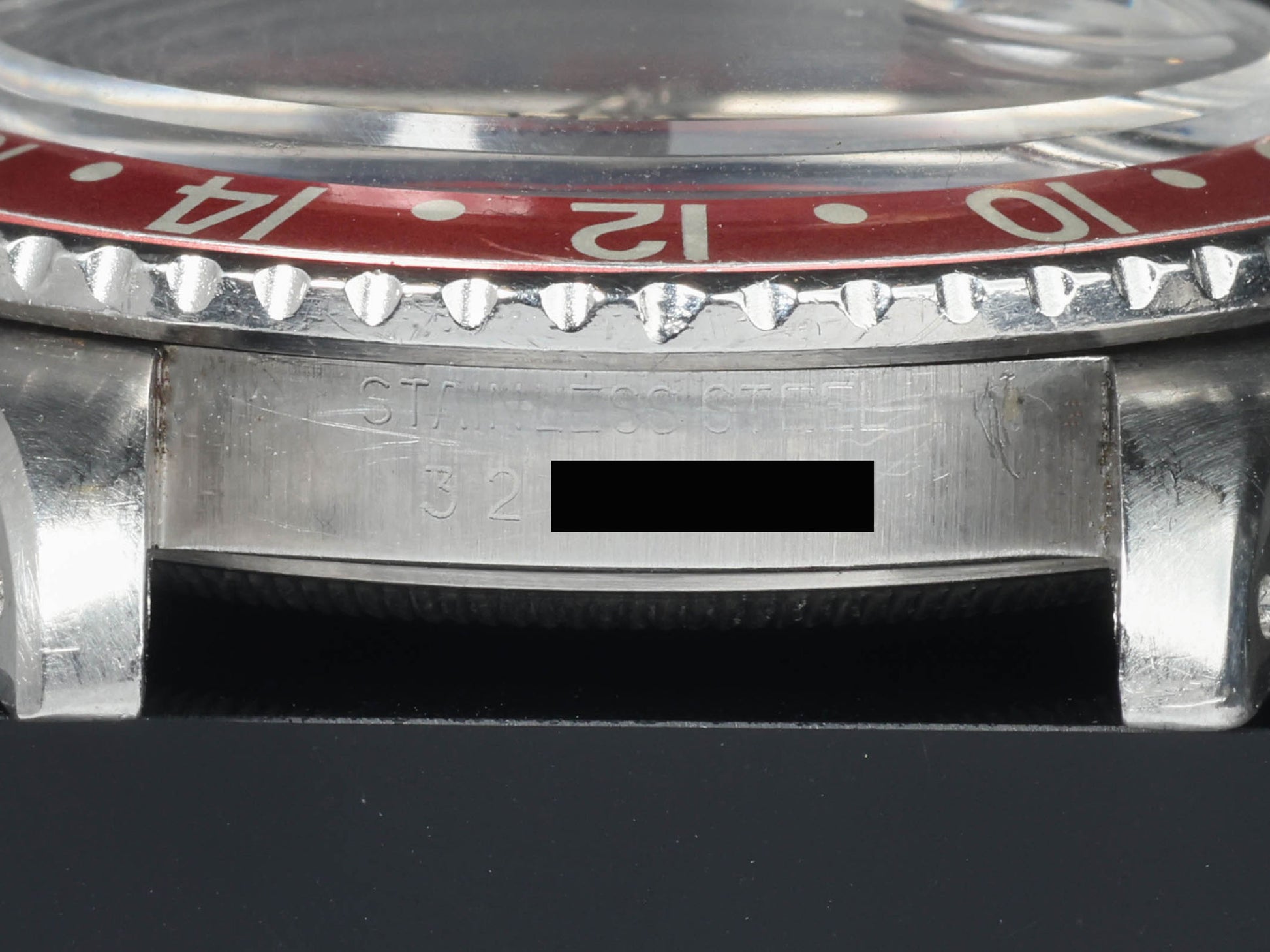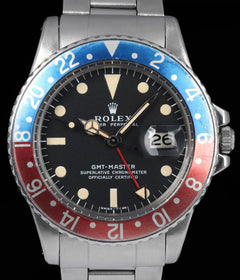Crown Vintage
Rolex GMT Master 1675 'MK2 dial' 40mm 1973
Rolex GMT Master 1675 'MK2 dial' 40mm 1973
Couldn't load pickup availability
Rolex GMT Master 1675 'MK2 dial' 40mm 1973
The stainless steel case remains in very good vintage condition, showing thick lugs with factory brushing and chamfers still visible. The matching Oyster bracelet also presents in very good shape, with minimal stretch and light hairlines consistent with careful wear. The MK2 matte dial is in excellent condition, with clear printing and luminous plots that have aged to an attractive cream patina. The hands are in good condition overall, with luminous material that has developed a similar cream tone to the dial. The hour hand shows light oxidation under magnification but remains solid and presentable. The red 24-hour hand retains strong colour, complementing the bezel insert. Overall, this example offers sharp case lines, a tight bracelet, and a well-preserved dial and handset, making it a strong vintage GMT-Master 1675 with desirable MK2 dial configuration.
Share
Why we love this watch
Why we love this watch
Rolex GMT-Master 1675 with Mark II Dial
Introduction
The Rolex GMT-Master reference 1675 is one of the most recognisable vintage Rolex sports watches. Produced from 1959 until 1980, it spanned over two decades and witnessed countless subtle evolutions. Its long run means that dial variations became one of the key ways to date and categorise examples, and each dial type has its own character and historical significance. Among them, the Mark II dial is one of the most distinctive, representing a transitional style that bridged the earlier gilt and matte dials with the more consistent production of later years.
The Mark II dial not only carries the hallmark features of the 1675 but also embodies Rolex’s approach to incremental refinement during this era. Paired with the red-and-blue “Pepsi” bezel insert, Oyster case, and calibre 1575 movement, the Mark II dial variant captures everything that made the GMT-Master a definitive Rolex sports watch.
The GMT-Master Story
The GMT-Master was introduced in 1954 as reference 6542, created in collaboration with Pan American World Airways. The goal was to provide airline pilots with a wristwatch capable of tracking two time zones simultaneously, essential for the rapid expansion of transcontinental jet travel. The original 6542 had a bakelite bezel that was fragile and prone to cracking, prompting Rolex to replace it with aluminium inserts.
By 1959, Rolex launched the 1675. This reference marked a significant step forward, with crown guards for the first time and an enlarged case that gave the watch greater presence. Over its long production span, the 1675 evolved through gilt dials, matte dials, and numerous detail changes. It became one of Rolex’s most successful sports watches, cementing the design codes still used in the GMT-Master II today.
The Case and Bezel
The stainless steel Oyster case of the 1675 measured 40mm, giving it a balanced yet commanding size for its time. The case was fitted with pointed crown guards in early production, later replaced by rounded crown guards that offered more protection and became standard for the reference.
The bezel remained bidirectional, fitted with an aluminium insert featuring the now-iconic red-and-blue colour scheme. The red half marked daylight hours, while the blue indicated nighttime. This dual-colour design was not simply decorative but functional, allowing pilots and travellers to quickly read home and local time.
Over time, bezel inserts aged uniquely, with reds turning to shades of pink or orange and blues fading into lighter sky tones. On a Mark II dial example, such natural fading often enhances the watch’s vintage appeal.
The Movement: Calibre 1575
By the early 1970s, the GMT-Master 1675 was powered by the Rolex calibre 1575, an automatic movement with 26 jewels, beating at 19,800 vibrations per hour. This movement was robust, accurate, and reliable, representing the technical peak of Rolex’s 1500 series calibres.
The calibre 1575 included a hacking seconds feature, introduced around this time, allowing the wearer to stop the seconds hand when setting the time for greater precision. The GMT function worked via an independently rotating 24-hour hand that tracked a second time zone against the bezel.
While not as mechanically advanced as the later independent-hour-hand system of the GMT-Master II, the calibre 1575 offered functionality well-suited to international travel and remained in use until the 1675’s discontinuation in 1980.
The Dial Evolution of the 1675
The dial of the 1675 changed significantly over its long production.
- Gilt dials (1959–1966): Glossy black with gold text, associated with early production.
- Matte dials with white printing (1966 onwards): Marked the transition to more modern production.
- Multiple “Mark” matte dials (late 1960s–late 1970s): Identified by subtle differences in font, spacing, and coronet design.
The matte dial era is where the Mark II belongs. These dials are prized today because of their legibility, tool-watch appearance, and the unique character of each variation.
The Mark II Dial Characteristics
The Mark II dial is one of the most distinctive matte dial types found on the 1675. Its defining features include:
- The Rolex coronet (crown logo) on a Mk II is similar to that used on earlier Type C & Mark 0 dials, meaning it’s relatively stout and less refined than later dials.
- The word “Rolex” in the text is thicker, the letters more square rather than elongated vertically.
- Of particular note: the L and E in “Rolex” are closer together than the spacing between other adjacent letters.
- The “Oyster Perpetual” and “Superlative Chronometer Officially Certified” text retains heavy serifs, reminiscent of earlier Mk 1, or “Mark 1.5” fonts.
- The lume plots (hour markers) are described as flat, not “waffled” (i.e. not heavily textured or sculpted) as seen on late Mk 1 variants.
Lume and Ageing
The lume on Mark II dials was tritium, denoted by the “SWISS – T<25” marking at six o’clock. Over time, tritium ages, losing its glow and often developing patina. On well-preserved examples, the lume plots take on warm cream, yellow, or even pumpkin tones, adding character and uniqueness to each watch.
The hands were also filled with tritium, though they sometimes age at a different rate than the dial. Matching dial and hand patina is always desirable, as it reflects originality.
Bracelet Options
The GMT-Master 1675 was commonly fitted with either the Oyster or Jubilee bracelet.
- Oyster bracelet (reference 7836 or later 78360): A sporty three-link bracelet that matched the tool-watch aesthetic.
- Jubilee bracelet (reference 6251H or 62510H): A dressier five-link bracelet that added refinement.
Both featured 20mm end links, with early examples fitted with folded links and later examples with solid links. The choice of bracelet significantly influences the watch’s look, with the Oyster emphasising ruggedness and the Jubilee giving it a more versatile, dress-capable character.
The GMT-Master in Context
By the 1970s, the GMT-Master was no longer just a pilot’s tool. It had become a watch embraced by business travellers, professionals, and style-conscious individuals. Its ability to track multiple time zones made it practical, while its bold red-and-blue bezel made it instantly recognisable.
The Mark II dial represents this period perfectly. Its matte finish underscored the GMT’s identity as a serious instrument, yet its design refinements showed Rolex’s growing attention to detail. It is both a tool watch and a symbol of cosmopolitan life in an era when international travel was becoming increasingly common.
Wearability and Presence
On the wrist, the 1675 with Mark II dial has an unmistakable vintage charm. Its 40mm case size remains highly wearable by modern standards, while its relatively slim profile makes it comfortable. The matte dial ensures excellent legibility, and the red 24-hour hand adds a touch of colour.
The faded aluminium bezel insert further enhances its character. Over decades, the red and blue tones soften, sometimes turning pastel or ghost-like, giving each example individuality. Combined with the warm patina of tritium lume, no two watches look exactly alike.
Why the GMT-Master Endures
The enduring appeal of the GMT-Master lies in its versatility. It is a watch that was designed for professional use yet became a global style icon. The 1675, with its long production run, epitomises this dual role.
With the Mark II dial, this balance is particularly evident. The watch is utilitarian in its matte finish and tritium lume, yet refined in its design execution. It is a tool watch that wears with sophistication, equally at home in a cockpit or a boardroom.
Final Thoughts
The Rolex GMT-Master 1675 with Mark II dial is a standout chapter in the history of Rolex sports watches. With its matte finish, tritium lume, and distinctive coronet, it represents a specific moment in the evolution of the GMT-Master.
Beyond its technical details, the watch embodies the spirit of international travel in the 1970s. It is bold yet refined, practical yet stylish. On the wrist, it offers vintage charm, individuality through patina, and the enduring design that has made the GMT-Master one of Rolex’s most important models.
Case & Bracelet
Case & Bracelet
- Case & bracelet in very good vintage condition.
- Thick lugs with factory brushing and chamfers visible.
- Minimal stretch on bracelet, light hairlines visible.
Dial & Hands
Dial & Hands
- Dial in Excellent condition, nice cream patina formed.
- Hour hand lightly oxidised.
- Hands in good condition, nice cream patina formed.
Warranty & Condition
Warranty & Condition
Crown Vintage Watches provides a minimum 3-month mechanical warranty on pre-owned watches, from the date of purchase.
The warranty covers mechanical defects only.
The warranty does not cover damages such as scratches, finish, crystals, glass, straps (leather, fabric or rubber damage due to wear and tear), damage resulting from wear under conditions exceeding the watch manufacturer’s water resistance limitations, and damage due to physical and or accidental abuse.
Please note, water resistance is neither tested nor guaranteed.
Shipping and insurance costs for warranty returns to us must be covered by the customer. Returns must be shipped via traceable courier. Return shipment must be pre-paid and fully insured. Collect shipping will be refused. In case of loss or damages, the customer is liable.
Our Pledge
At Crown Vintage Watches, we stand by the authenticity of every product we sell. For added peace of mind, customers are welcome to have items independently authenticated at their own expense.
Condition
Due to the nature of vintage timepieces, all watches are sold as is. We will accurately describe the current condition and working order of all watches we sell to the best of our ability.
Shipping & Refund
Shipping & Refund
